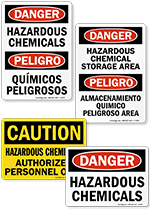Salmonella outbreak shows poultry safety problems

Chicken sourced from three California poultry plants is causing an outbreak of salmonella. [Photo by Raul Perez Photo]
As of Oct. 17, officials report that 338 people from 20 states have become ill due to chicken products contaminated with seven strains of Salmonella Heidelberg. The infection, which causes fever and gastrointestinal illness, has been linked to three Foster Farms plants in California.
The case raises some particularly disturbing questions regarding the safety nets associated with tainted chicken:
It hasn’t been recalled.
Currently, no Foster Farms products have been recalled, nor have any of the plants been closed. According to Consumers Union, the policy division of Consumer Reports, “The U.S. Department of Agriculture (USDA) does not have mandatory recall authority, but it does have the ability to recommend a recall to the company and to detain and seize adulterated products in commerce when a company refuses a recall. In this case, the USDA has chosen to do neither.”
The USDA’s Food Safety and Inspection Service (FSIS) states it was not able to connect a specific Foster Farms product to the outbreak, so the agency “did not have the evidence to make a legal case for a recall of product produced by Foster Farms.”
While the USDA threatened to shut down the facilities, the company agreed to a “corrective action plan” and intensified monitoring, allowing the plants to remain open. The company’s website assures customers that “all Foster Farms poultry products are safe and wholesome to consume when safe food handling and cooking practices are followed.”

Conditions at factory farms and processing plants can contribute to the spread of disease. (Photo by Matt MacGillivray)
The salmonella is antibiotic-resistant.
Many of the seven salmonella strains linked to the Foster Farms outbreak are antibiotic-resistant, due to the agriculture industry’s now-routine use of antibiotics to keep livestock healthy and encourage growth. Because of this, 40 percent of those infected in the outbreak have been hospitalized, which is double the typical rate, according to the CDC.
It’s not just one brand.
So far, “FSIS is unable to link the illnesses to a specific product and a specific production period.” And those products aren’t just under the “Foster Farms” label. According to Consumer Reports, raw chicken from the facilities was sold under a variety of brands, including Ralphs, Safeway Farms, Simple Truth Organic, O Organics, Eating Right, Kirkland Signature and Open Nature.
For now, the best way to determine if you have a potentially tainted product is to check for these numbers within the USDA mark of inspection: P-6137, P-6137A and P-7632.
It was cooked.
So you only buy pre-cooked chicken? Beware. A Costco store in South San Francisco has voluntarily pulled more than 23,000 units of rotisserie chicken from Foster Farms after it was connected to the outbreak. This is store-cooked rotisserie chicken – which, according to the company, is cooked to 180 degrees, which is well above the 165 degree minimum internal temperature which is required to kill salmonella. The company believes it was due to cross-contamination, although some have questioned if the poultry was undercooked.
Until there’s evidence that this outbreak is due to a new strain of salmonella with a higher heat resistance, the one surefire way to protect yourself from tainted chicken is to make sure it is cooked to a minimum internal temperature of 165 degrees. In addition, while handling raw poultry or meat, the USDA recommends preventing cross-contamination by washing countertops, sinks and other surfaces with hot, soapy water, and using separate cutting boards. And, despite what you may have been told, the USDA recommends against washing raw poultry or meat prior to cooking, stating that the types of bacteria that can be rinsed off can splash onto nearby surfaces – up to 3 feet away, according to the U.K. Food Standards Agency.
Category: Food Safety











